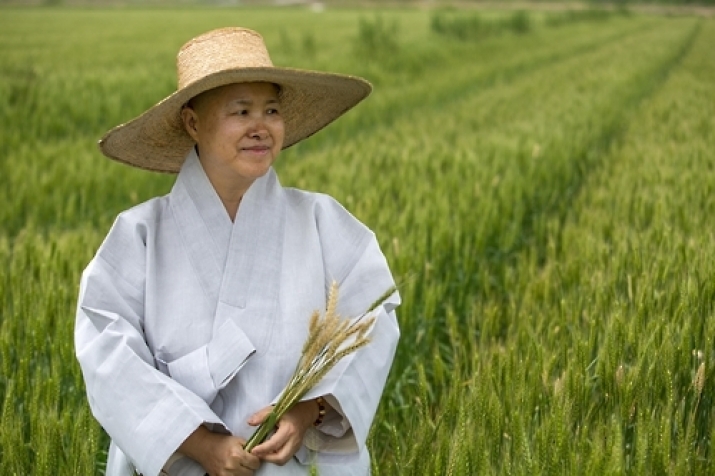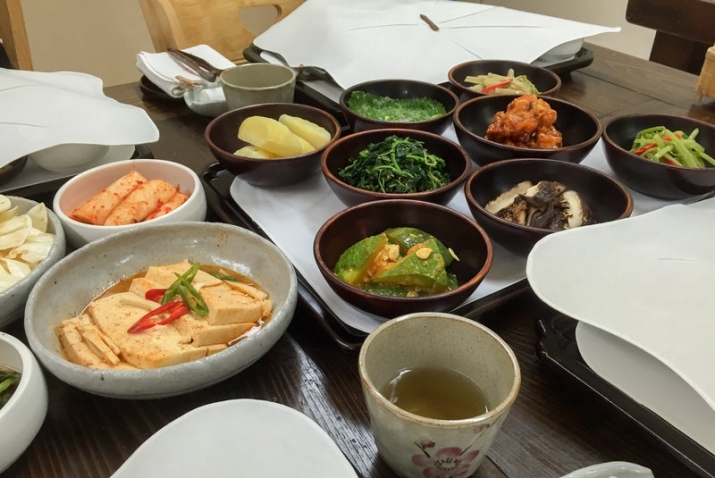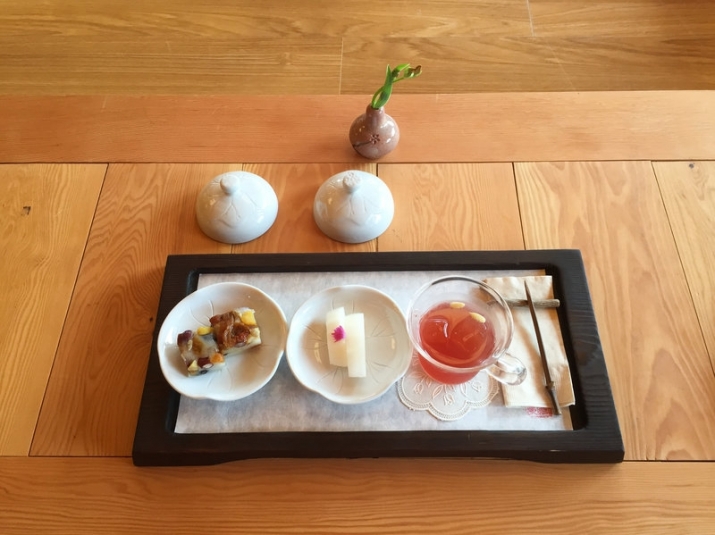NEWS
Korean Nun Publishes New Book on Buddhist Cuisine to Heal Mind and Body
 Ven. Seon Jae. From yonhapnews.co.kr
Ven. Seon Jae. From yonhapnews.co.krKorean Buddhist nun Venerable Seon Jae, best known for popularizing the cuisine of Korean Buddhist temples, has released a new book titled What Do You Eat for Living? During a press briefing about the book in Seoul, in late December, Ven. Seon Jae spoke about temple food and the Buddhist culinary culture.
According to Yonhap News Agency, her new book offers stories and accounts that focus on cultivating the mind and body—and overcoming lung cancer—through simple but healthy food.
“Since my first book was published in 2000, I was asked by so many people to write a cook book. The focus shouldn’t be on how to make tasty meals,” said Ven. Seon Jae, adding that her present publication was aimed at changing people’s broader approach to food. (Yonhap News Agency)
In 1994, she published a thesis on Korean temple food. This was the first of its kind and had an immediate impact on people’s interest in healthier eating. She has also offered advice on dietary habits, particularly for parents with picky children, and held temple food cooking classes. Some of her principles, based on Buddhism, are as follows: “All food is medicine,” “nourishment is pharmaceutical," and “change what you eat according to a season.”
 A selection of temple cuisine. From npr.org
A selection of temple cuisine. From npr.orgAged 60, Ven. Seon Jae became a Zen nun at the age of 17. She was one of the first monastics to be interested in cooking temple food as an art in Korea. She became passionate about her cooking after she overcame lung cancer through food therapy. Her achievements have recently been recognized by the Korean Buddhist Jogye Order, which bestowed on her the unique title of Temple Food Master.
“The real masters are in the mountains right now who cook and eat temple food as a way of practicing Buddhism,” said Ven. Seon Jae. “I believe they’ve bestowed me with this title so that I feel responsibility for carrying on with this mission for the rest of my life.” (Yonhap News Agency)
 Iced berry tea, melons, and squares of sweet sticky rice topped with fruits and nuts. From npr.org
Iced berry tea, melons, and squares of sweet sticky rice topped with fruits and nuts. From npr.orgTemple food is similar to vegan food, but the difference is that “there is a dose of wisdom in Korean temple food,” said Ven. Seon Jae. For her, eating food while living a monastic life is not just about satisfying one's hunger and staying healthy but also about leading a spiritual life through culinary experiences. Korean Buddhist Cuisine is vegan and characteristically does not feature garlic, leeks, or any kinds of onion. Typical dishes consist of mushrooms, radishes, marinated bean curd, potatoes, and greens cooked by fermenting, dehydrating, pickling, and other methods that infuse otherwise simple ingredients with delicious layers of flavor. For drinks, the Buddhist menu offers iced tea made from fresh berries and for dessert one can enjoy melons and squares of sweet sticky rice topped with fruits and nuts. (NPR)
See more
‘Temple food master’ preaches Buddhist way of eating to heal mind, body (Yonhap News Agency)
Buddhist Diet For A Clear Mind: Nuns Preserve Art Of Korean Temple Food (NPR)














